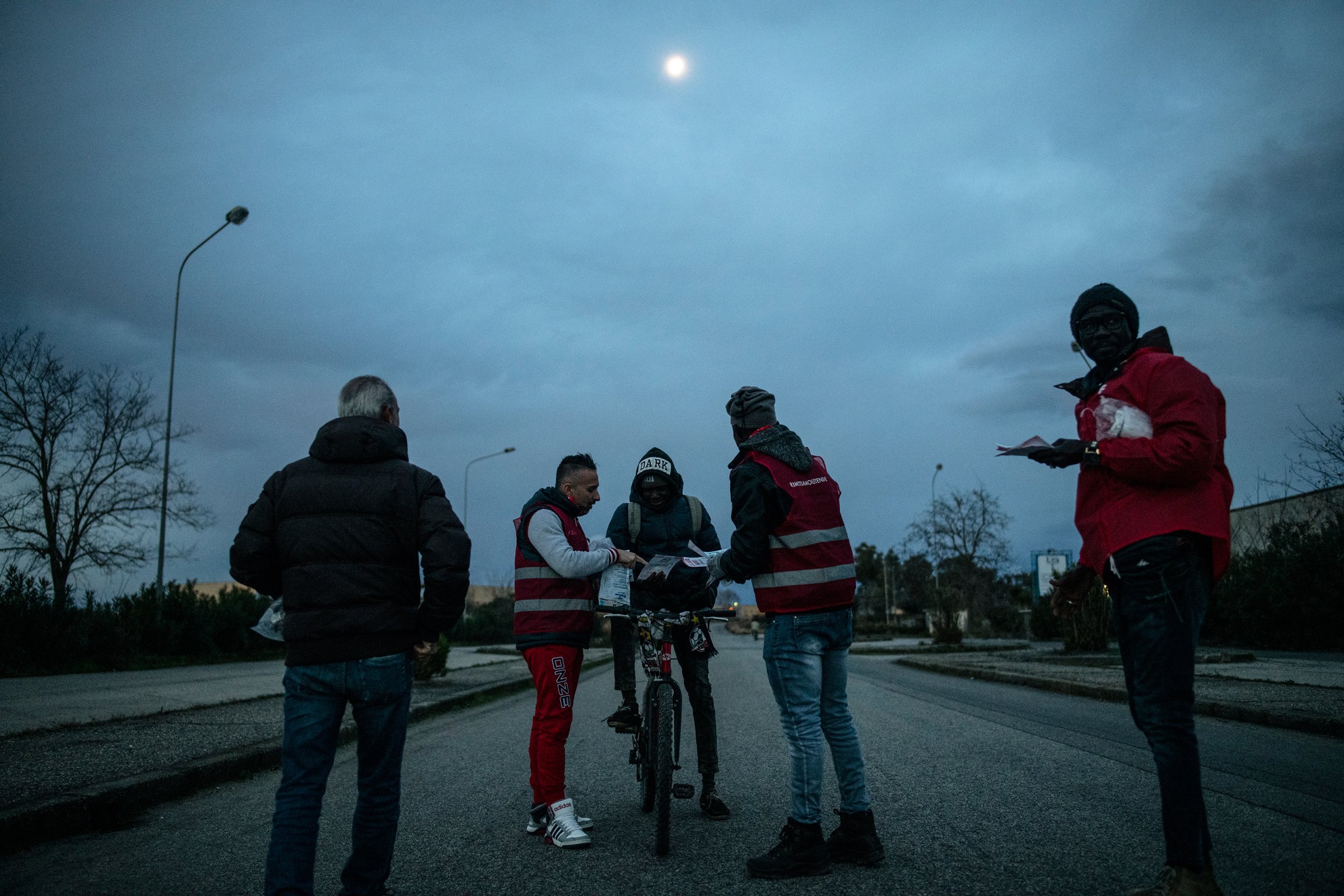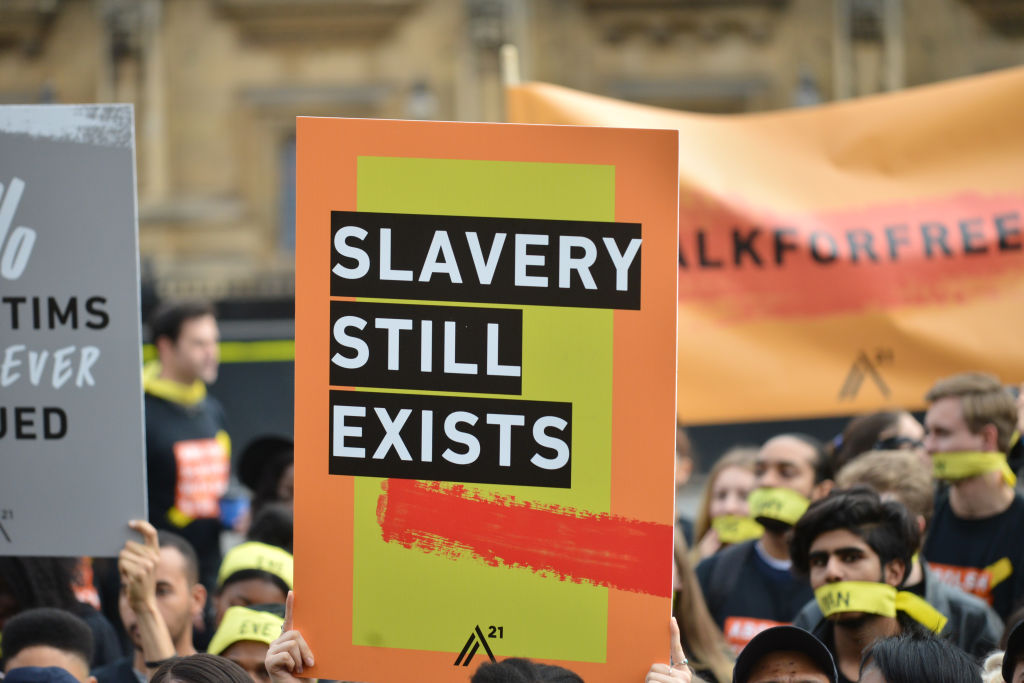
For many people around the world, the fact that December 2 is celebrated as the International Day for the Abolition of Slavery may seem like an archaic throwback. After all, the days of the trans-Atlantic slave trade are long over, and in 1981 the African nation of Mauritania became the last country in the world to formally abolish the practice, even if remnants still linger in the shadows. Yet according to economist Siddharth Kara at the Carr Center for Human Rights Policy, there are more than three times as many people in forced servitude today as were captured and sold during the entire 350-year span of the transatlantic slave trade. The fact that slavery is not a thing of the past, despite global treaties banning its existence, can be attributed to many factors.
In the case of African men and women forced to sell their bodies or labor for little to no pay in Europe, it has a lot to do with an immigration policy out of sync with the demands of the European labor market, combined with the inevitability that young Africans will migrate, no matter the risk, in search for better opportunities than they can find at home.
What the International Labor Organization calls the “new slavery” keeps an estimated 25 million people trapped in debt bondage or other forms of forced labor, producing many of the goods that keep the global economy going. Forced marriage, which is also considered a form of modern slavery, afflicts another 15.4 million women and young girls. Modern slavery doesn’t come with the iron chains and auctions of the past. Today’s restraints take the form of withheld documents, the possibility of exposure, and the threat of deportation. Modern slavery, and the human trafficking networks that enable it, is a $150 billion a year criminal enterprise that spans the world.
Its victims can be found in a wide range of industries, from fashion to seafood, electronics, agriculture, construction and even cannabis farming. Today’s slavers funnel their ready and easily exploitable supply of victims into a global supply chain desperate for the low cost labor that competitive prices demand. But they are not the sole perpetrators. According to the 2018 Global Slavery Index, G20 countries import some $354 billion worth of products at risk of being produced in part by modern slavery every year, from frozen prawns to cell phone batteries, pet food, jewelry and canned tomatoes.
And it’s not just imports. Last year, TIME documented how Europe’s restrictive immigration practices resulted in a new African slave trade, forcing would-be migrants to Europe from countries such as Nigeria, Senegal, Cameroon and Ethiopia to put their lives in the hands of human traffickers for exorbitant prices, more often than not resulting in systems of debt labor. A 2016 report by the International Organization for Migrants found that 7 out of 10 migrants crossing from North Africa to Europe had experienced exploitation of some kind or another, including kidnapping for ransom, forced labor, illegal detention and sexual violence en route. And arrival in Europe rarely offers respite, says Mohamed Yahya, the United Nations Development Program [UNDP] representative in Nigeria, who has just co-authored a new report based on a survey of more than 3000 adult African migrants who arrived in Europe through irregular means, meaning without visas or formal immigration procedures. The report focused on those migrants whose primary motivation was looking for work and opportunity rather than seeking asylum or for humanitarian assistance. The highest number of respondents were from Nigeria, at 17%, followed by Senegal, Mali, Guinea and other West African nations.

Few African migrants outside of Eritrea are automatically considered eligible for asylum status, and as a result are not allowed to work or access social services while in Europe. Yet rarely are they sent home, leaving them in limbo and vulnerable to exploitation. “In order to simply survive, they have to work outside the legal system, which obviously exposes them to hardship and systems of forced or undercompensated labor,” says Yahya. Meanwhile, the demand for their labor in Europe is still high, either as field workers or cleaners or in other unskilled trades, he says, indicating an unmet need in the European labor pool. “The root cause of irregular migration is not human trafficking, but demand,” he says. Young Africans want jobs in Europe that they can’t find at home, and an ageing Europe needs workers to fill gaps in the labor market. Yet there is no visa process that enables that exchange, notes Yahya. “Currently, to go to Europe as a lower middle class African, is impossible. You won’t get a visa. That is why irregular migration exists, and that is why the issue of human trafficking, and extreme exploitation — modern slavery — exists.” One of his solutions, backed by the findings of the report, is the establishment of a legal pathway to temporary migration, such as a work visa tailored to the specific labor demands of certain industries.
Contrary to most assumptions about irregular immigrants to Europe, the UNDP survey found that those migrants who had been able to find work, legal or otherwise, were more likely to return home after four to five years than those who did not. Yahya attributes that to return on investment, noting that irregular migrants were often forced to spend large sums to reach Europe. Once they felt that they had recouped their initial outlay, and were able to save a small nest egg, they were more willing to return home with whatever skills they had gained while in Europe. Those who could not find work, or save money, were more inclined to stay in Europe for fear of facing shame and unpaid debts back home. “This idea, which is so prevalent in European politics right now, that you make life so difficult for the migrants, you don’t let them work, you don’t let them have access to social services, and that they are so miserable that they will want to go home, isn’t actually based on reality,” he says. Yahya calls the situation a chance for “circular migration,” that benefits both the European industries that need laborers, and the African nations that need opportunities for their young people.
Illegally or not, says Yahya, the survey results show that young Africans will attempt to migrate to Europe regardless of the risks. So why not make it safer for them, and clearer for Europe? “I am not convinced that we can deal with the exploitation issue if we don’t have a better alternative. The best way to bring an end to forced labor, exploitation and human trafficking is to offer a legal system of migration.”
More Must-Reads from TIME
- Donald Trump Is TIME's 2024 Person of the Year
- Why We Chose Trump as Person of the Year
- Is Intermittent Fasting Good or Bad for You?
- The 100 Must-Read Books of 2024
- The 20 Best Christmas TV Episodes
- Column: If Optimism Feels Ridiculous Now, Try Hope
- The Future of Climate Action Is Trade Policy
- Merle Bombardieri Is Helping People Make the Baby Decision
Contact us at letters@time.com